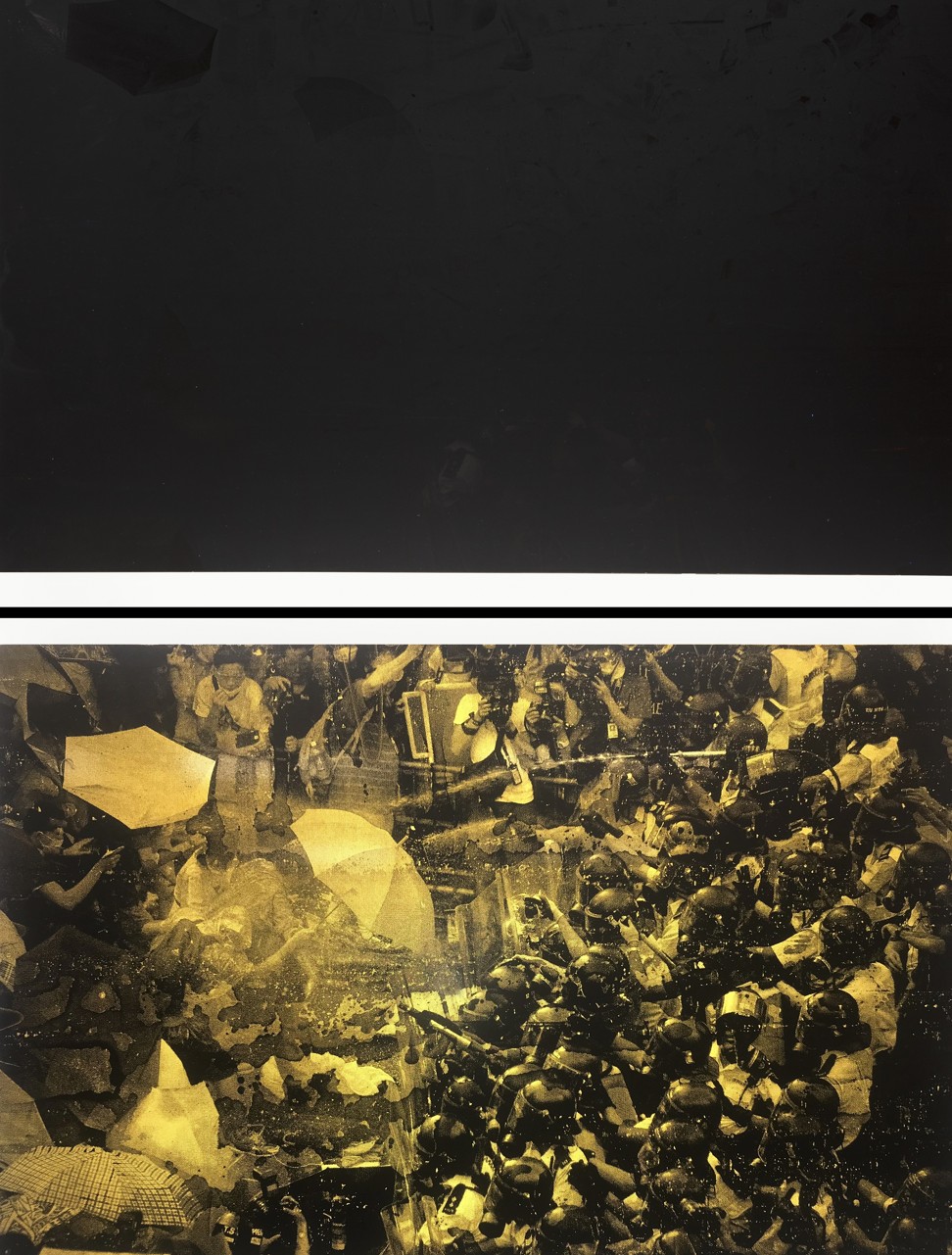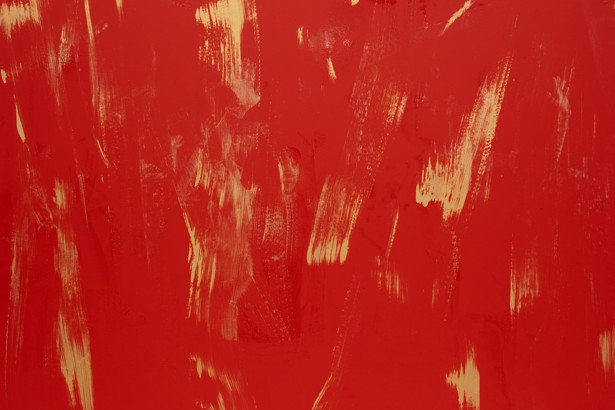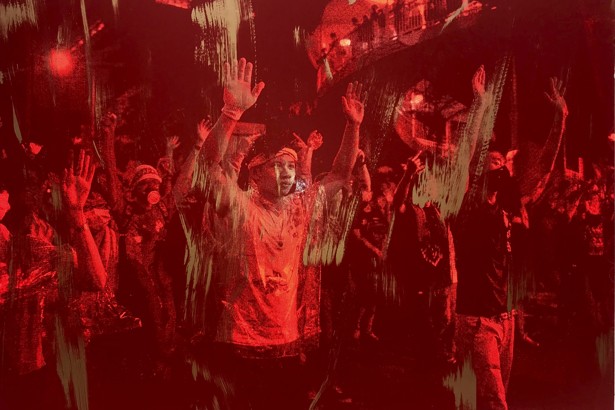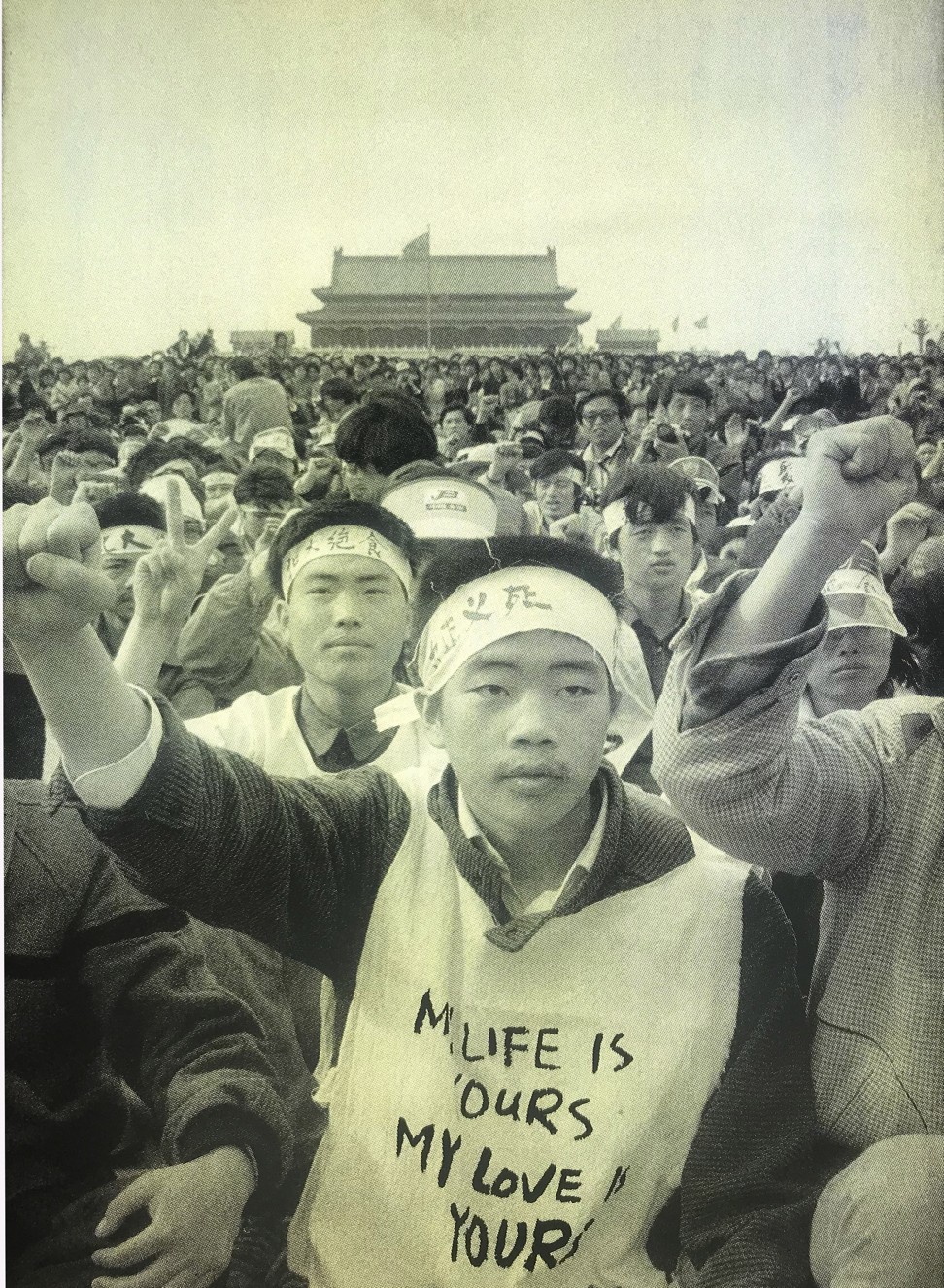
1989 Tiananmen Square and 2014 Hong Kong protests shown in new light – literally – by US artist
Hank Willis Thomas’ exhibition at Ben Brown Fine Arts uses an ingenious technique to portray various scenes of protests by Chinese people over the last half a century
American artist Hank Willis Thomas does not shy away from political sensitivities, and the manipulation of protest images in his Hong Kong exhibition – his first Asia solo show – may upset some people in a city where the anger and confusion that came after the divisive 2014 Occupy Central protest have yet to be reconciled.
“My Life is Ours”, at Ben Brown Fine Arts in Central, features a series of images based on photographs of various protests by Chinese people: the Hong Kong riots of 1967, the New York Chinatown protest against police brutality in 1975, Tiananmen Square in 1989, and the 2014 Occupy Central protest, also known as the “umbrella movement”.
Artist shows traditional Chinese landscapes on real human bodies
Thomas’ images use an ingenious technique that he has used before for other protest images that forces people to look at these scenes in a different light – literally.
First, he selects archive images – a controversial move because of copyright issues – and transfers them by silk-screen printing onto a special aluminium sheet. He paints over the images using a kind of reflective paint often used on traffic signs. The original image is concealed under normal lighting, but becomes perfectly clear when illuminated by a flashlight or a camera flash.

It is perhaps a gimmick for the age of social media, but the way the images suddenly burst into view does make them more dramatic and powerful. That is why people who consider the Occupy Central protesters as criminals may find it uncomfortable that he glorifies them with images such as I Think It’s Gonna Rain Today (Black on Black). This image, which shows a crowd of people brandishing yellow umbrellas facing off with riot police armed with water cannons, highlights the peaceful nature of the protest against the government’s refusal to grant Hong Kong greater democracy.
I love the poetry of ‘My life is ours, my love is yours,’ and how it speaks about community and how all of us belong to one another
But Thomas says he is not taking sides. We Have Faith In the Masses (White on Black), also in the show, features a row of Hong Kong protesters in 1967 standing up to police. These were people sympathetic to the Chinese Communist Party – blamed by the 2014 protesters for holding back democratic progress – who fought against their then British colonial rulers.
“One person’s hero is another person’s villain,” Thomas says, adding that he is interested in protests because of the things they all have in common: the body language, the way they are organised, and the sense of community generated by large groups of individuals pursuing the same goal. Just like in team sports (another recurring theme in his work), protests generate and feed off an incredible amount of energy projected by the crowd. It can turn nasty, but Thomas chooses to focus on the positive emotions regardless of the specific causes.


The title of the show comes from a partly hidden slogan on one of the Tiananmen protester’s T-shirts. “I love the poetry of ‘My life is ours, my love is yours,’ and how it speaks about community and how all of us belong to one another,” Thomas says. “In all these scenes, people are hopeful and anticipating what they see as positive change.”
Ben Brown, owner of the gallery, specialises in Western contemporary art that is normally of a non-political nature. He has shown works by Thomas in London before, but says he is not making a political stand either.
“Hank is a highly regarded American artist who, like me, firmly believes in the freedom of speech and the ability to depict in artistic matters what should be debated,” he says. “I was born and brought up in Hong Kong. By hanging these works on my wall and saying that I fully believe in the freedom of speech will hopefully help generate a debate that needs to be had.”


Thomas’ art, however, sometimes lands him in hot water.
The group For Freedoms, which he co-founded to encourage more participation in civic life in the US, put up a billboard in 2016 displaying Donald Trump’s campaign slogan, “Make America Great Again”, against a photograph of black civil rights protesters confronting white police officers during the 1965 Selma to Montgomery march. While the intended message was meant to be about getting more people to vote, the billboard came under attack because a lot of people thought it was backed by white supremacists.
Inside the Beijing art spaces providing that rare thing: independence
This month brought another controversy. Graeme Williams, a South African photographer, accused Thomas of plagiarism after discovering that a photograph he took at the end of apartheid was used as the basis of Thomas’ new work being shown at a Johannesburg art fair.
Ben Brown Fine Arts says details about Thomas’ source images and who the original photographers were are available in the gallery.
Hank Willis Thomas: My Life is Ours, Ben Brown Fine Arts, 303 Pedder Building, 12 Pedder Street, Central, Mon-Sat, 11am-7pm. Until Oct 27

